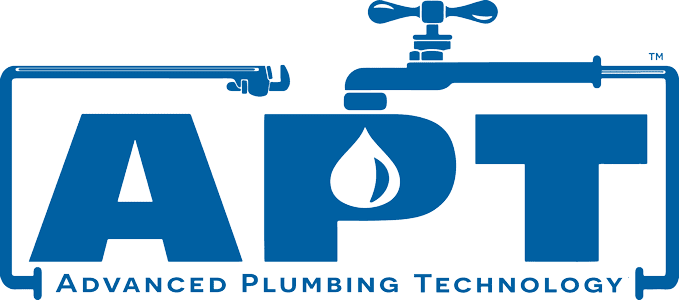Renovating an Older Home? Here’s Your Guide to Updating the Plumbing
September 24th, 2023Posted by Brian Shoemaker
In the world of home renovations, there’s a special charm to breathing new life into an older house. The character, the history, the stories embedded within its walls – these are all aspects that make renovating an older home a unique and rewarding experience. However, along with that charm comes the need for thorough updates, and one critical aspect that often requires attention is the plumbing system. As experts in plumbing and home improvement, we at Advanced Plumbing Technology understand the significance of updating plumbing during a renovation. In this comprehensive guide, we’ll take you through the essential steps and considerations to ensure that your older home’s plumbing is not only functional but also optimized for modern living.
Assessing the Current Plumbing System
Before diving into any renovation project, a thorough assessment of the existing plumbing system is paramount. This assessment involves identifying the materials used in the pipes, checking for leaks, evaluating the water pressure, and determining the overall condition of the system. Understanding the layout and intricacies of your home’s plumbing will provide the foundation for your renovation plans.
Creating a Detailed Plumbing Renovation Plan
With a clear understanding of the current plumbing system, it’s time to create a detailed renovation plan. This plan should outline the specific updates and modifications you intend to make. Are you looking to add new fixtures, relocate plumbing lines, or replace old pipes? Deciding on the scope of your renovation will guide your project and help you allocate the necessary resources effectively.
Choosing Modern Plumbing Materials
Advancements in plumbing technology have introduced a range of modern materials that offer improved durability and efficiency compared to traditional options. When renovating an older home, consider using materials such as PEX (cross-linked polyethylene) pipes for water supply lines. PEX pipes are flexible, resistant to corrosion, and can be installed without the need for extensive demolition.
Upgrading Fixtures for Efficiency and Aesthetics
Updating your home’s plumbing fixtures can significantly enhance both functionality and aesthetics. Old faucets, showerheads, and toilets can be replaced with water-efficient models that not only conserve water but also add a touch of contemporary style. Look for fixtures with the WaterSense label – a certification that indicates they meet water efficiency and performance criteria set by the Environmental Protection Agency (EPA).
Ensuring Proper Ventilation and Drainage
Proper ventilation and drainage are crucial components of a well-functioning plumbing system. During your renovation, ensure that plumbing vents are correctly installed to prevent odors and gases from building up in your home. Additionally, focus on optimizing drainage to prevent clogs and backups. Consider trenchless sewer line repair methods if your home’s sewer system requires attention.
Addressing Lead and Galvanized Pipes
Many older homes were built using lead or galvanized pipes, both of which can pose health risks and deteriorate over time. If your home has these types of pipes, it’s essential to address the issue during your renovation. Replace lead pipes with safer alternatives, and consider upgrading from galvanized pipes to more durable materials to improve water quality and prevent leaks.
Incorporating Smart Plumbing Technology
The concept of a “smart home” has extended to plumbing systems as well. Integrating smart technology can provide you with greater control over your home’s water usage and enhance overall efficiency. Smart leak detectors, water heaters, and irrigation systems can all contribute to a more sustainable and convenient living environment.
Hiring a Professional Plumbing Contractor
While DIY projects can be rewarding, plumbing renovations require a certain level of expertise to ensure everything is installed and connected correctly. Hiring a licensed plumbing contractor is a crucial step in your renovation journey. Professionals have the knowledge, experience, and tools to handle complex plumbing tasks and address unforeseen challenges that may arise during the renovation process.
Obtaining Necessary Permits
Before embarking on any plumbing renovation project, it’s essential to determine whether you need permits from your local authorities. Depending on the scope of your renovation, permits may be required to ensure that the work meets safety and building code standards. Failing to obtain necessary permits can result in delays, fines, and potential complications down the line.
Budgeting for Unexpected Costs
Renovation projects, especially in older homes, can often unveil hidden issues that require immediate attention. As you create your renovation budget, it’s wise to allocate a portion for unexpected costs. This buffer will provide you with the flexibility to address any plumbing-related surprises without derailing your entire project.
Conclusion
Renovating an older home is a labor of love that requires careful planning, attention to detail, and a commitment to preserving its unique charm. When it comes to updating the plumbing system, enlisting the expertise of professionals can make all the difference. By assessing the current system, creating a comprehensive plan, choosing modern materials, and incorporating smart technology, you can transform your older home’s plumbing into a modern, efficient, and reliable system that stands the test of time. As you embark on this renovation journey, remember that a well-executed plumbing update not only enhances your daily living but also adds substantial value to your cherished older home.
